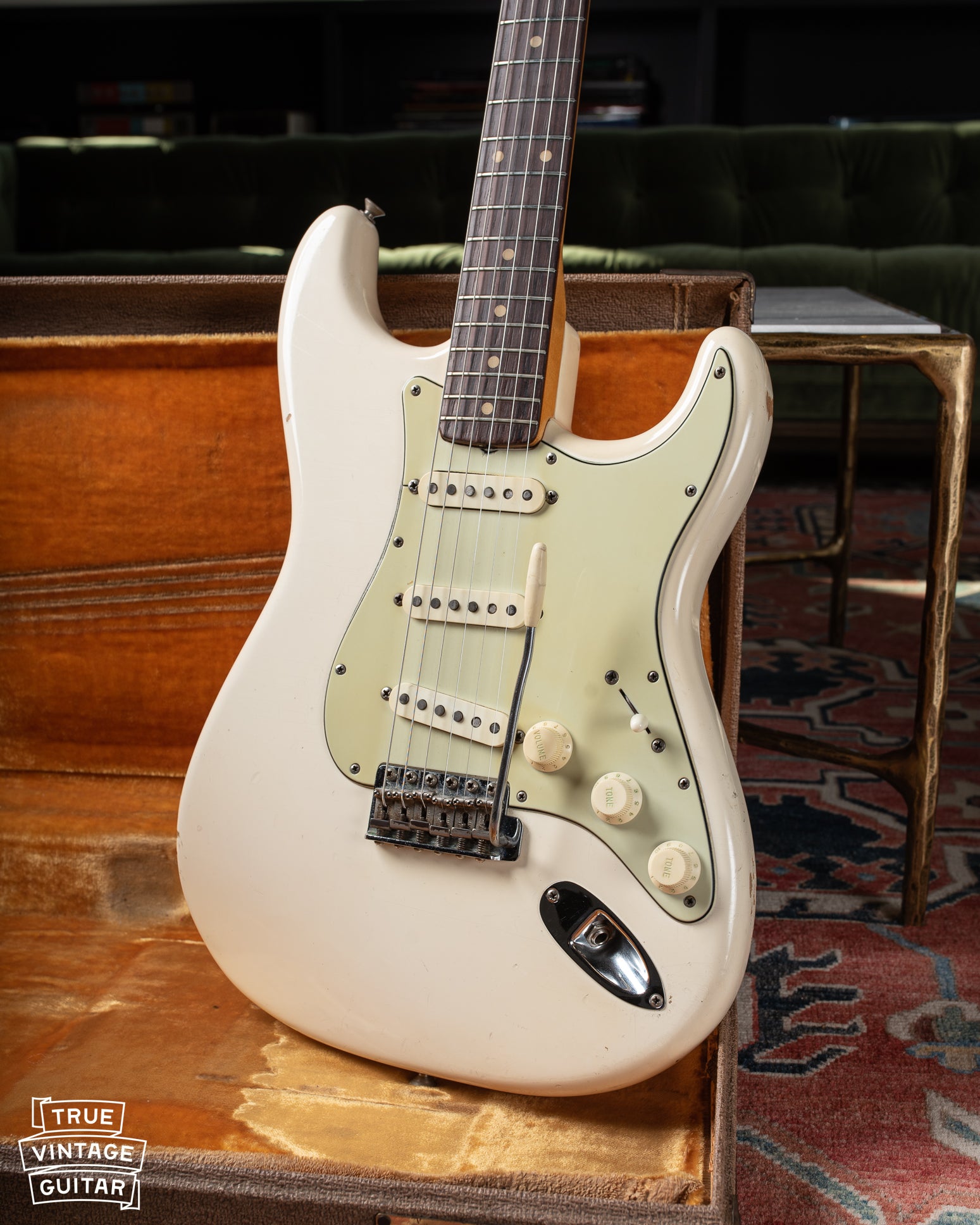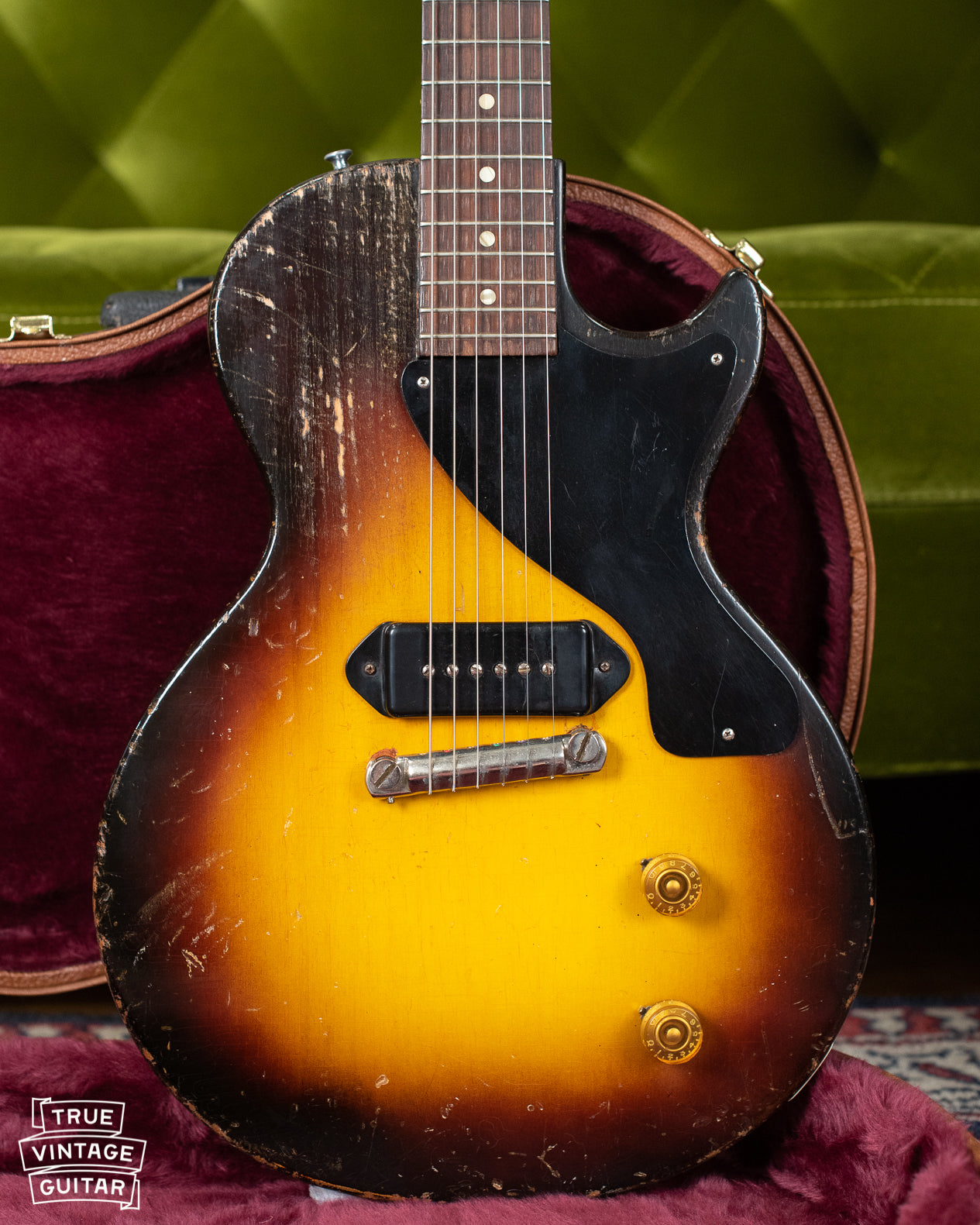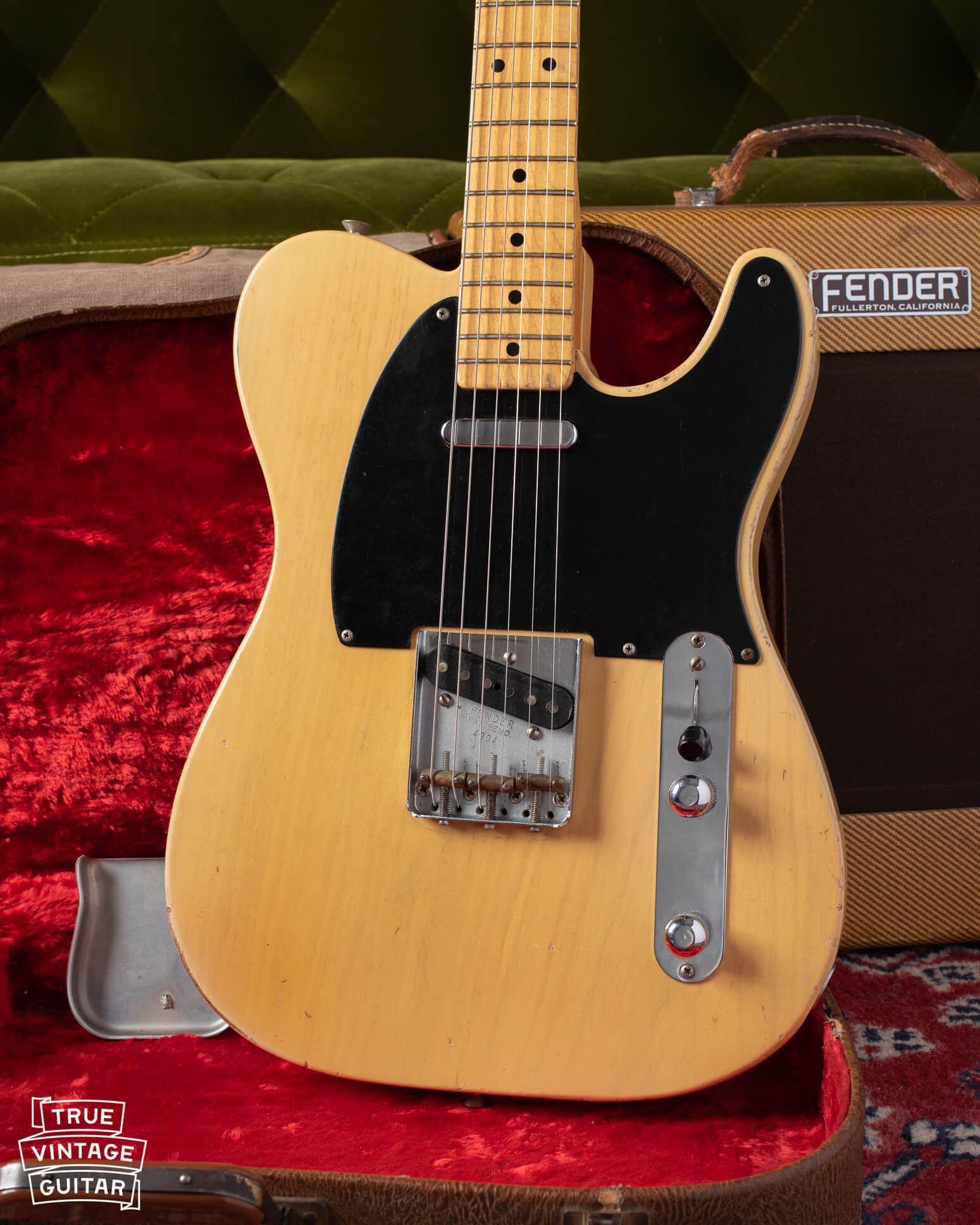The Fender Stratocaster guitars made in 1961 are some of the finest that the company every made since their introduction in 1954. The slab Rosewood fretboards, thin finishes, mint green pickguards, and overall excellent build quality combine to make an instrument highly desired by players who collect and collectors who play. The Fender Electric Instrument Co was making some of its finest guitars and amplifiers in 1961.
As a Fender guitar collector, I'm always on the hunt for the nicest examples of Stratocaster guitars made in the 1950s and 1960s. If you're looking for more information on dating Fender guitars then check out Fender Serial Numbers. Or if you're looking to sell a vintage Fender guitar to a passionate player and collector then you can contact me here: Sell a Fender.

How much did a Stratocaster cost in 1961?
The best way to find out how much a Fender Stratocaster cost in 1961 is to check the price list for that year. Fender distributed price lists which list all the models of guitars and amplifiers and the retail cost of each. The screen shot below of the price list shows that a typical Sunburst with tremolo Stratocaster cost $289.50 in 1961. A custom color Stratocaster like the Olympic White one pictured here was a bit more at $303.97. The most expensive Stratocaster in 1961 was in a custom color with gold hardware (eg. 1962 Stratocaster Fiesta Red with Gold Hardware).
The value of a 1961 Stratocaster has obviously vastly exceeded the increase in value as a result of inflation. You can read more about values here: Stratocaster Values.

1961 Stratocaster Features
One of the goals I have for this website is to be a resource for important information about vintage guitars. This section is to record all the measurements of this 1961 Fender Stratocaster so that we can compare them with future guitars.
|
Serial number: 57927 Neck date: 1/61 (January 1961) Potentiometer codes: 304 6034 (304 = Stackpole, 60 = 1960, 34 = 34th week) Weight: 7.4 lbs / 3.35 kg Neck width: 1.66" / 42.3mm Neck depth: 1st fret = 0.80", 12th fret = 0.98" Pickup resistance: Neck = 5.82k ohms, middle = 5.71k ohms, bridge = 5.73k ohms Pickup magnet polarity: North facing magents which attract the south pole of a compass Tuners: single line Kluson Fretboard markers: vulcanized fiberboard (clay dots) Custom color features: masking tape under the pickguard reading "Olympic White w/t T 356". The neck pocket shows a masking tape relief mark with "O. White T-356" with the desert sand undercoat visible. Nail holes?: yes Undercoat?: Desert sand |
 |
How the Stratocaster changed in 1961
Much of the Stratocaster features remained the same from 1960 to 1961 to 1962, but one key difference is the logo on the headstock. Fender began adding patent numbers underneath the "STRATOCASTER" model name. Although the new logo, now referred to as transitional by collectors, was introduced in 1960 on the Jazz Bass, the Stratocaster model retained the spaghetti style logo until late 1964. The amount of patent numbers was updated twice before the new transitional logo was used on the model.
One additional important update to the Stratocaster model in 1961 was the reversal of the pickup magnet polarity. The magnets comprising the pole pieces of Stratocaster pickups faced north to strings (attracting the south pole of a compass) until sometime in 1961. The magnets after this changed remained facing south to strings for guitars made after the change. This early 1961 Stratocaster still has north facing magnets similar to all the Strats since 1954.
 |

|
Do you have a 1961 Stratocaster? Get in touch:
I am continually on the hunt for the nicest examples of 1961 Stratocasters out there. I'm primarily looking for '61 Strats with original finishes and especially custom colors. Do you have one? You can contact me here: Sell a Fender. I'd be happy to take a look at it and I may be the buyer you're looking for. If I already have one then I might be able to connect you with the perfect buyer who will cherish your guitar for years to come.
Looking for help with value? Check out: Stratocaster Values.




